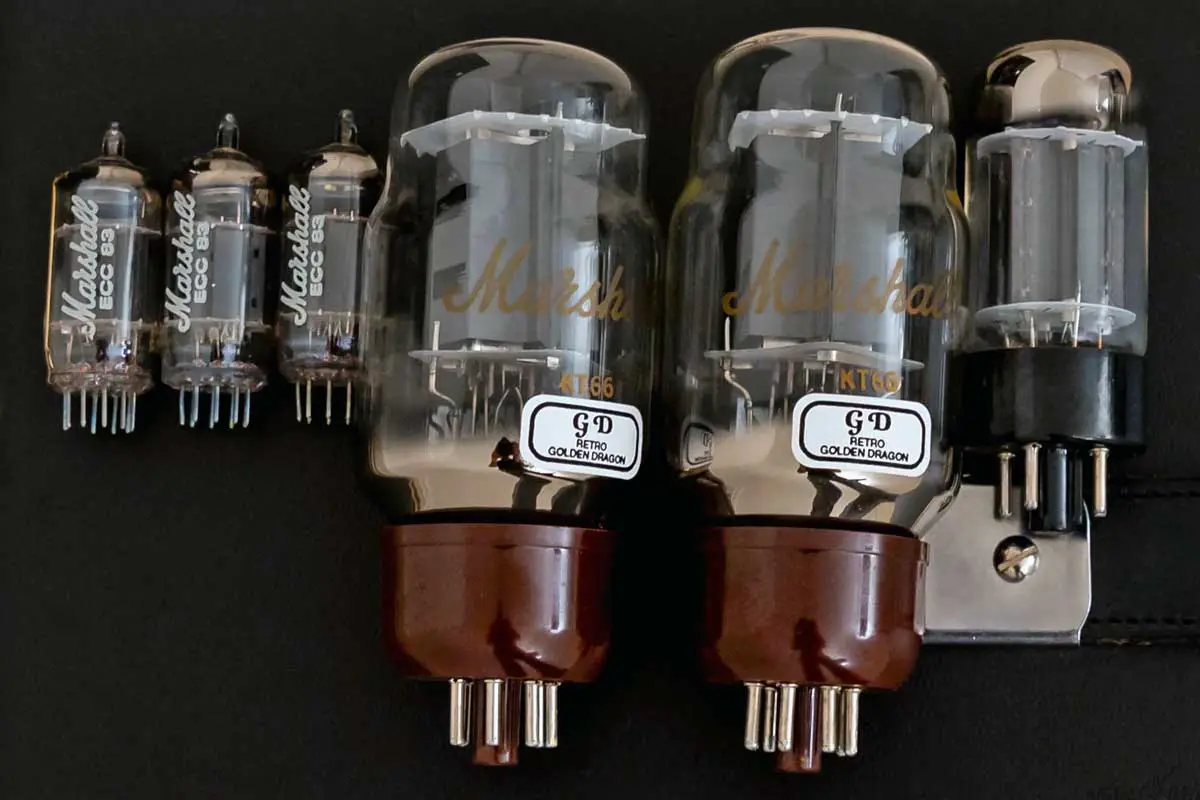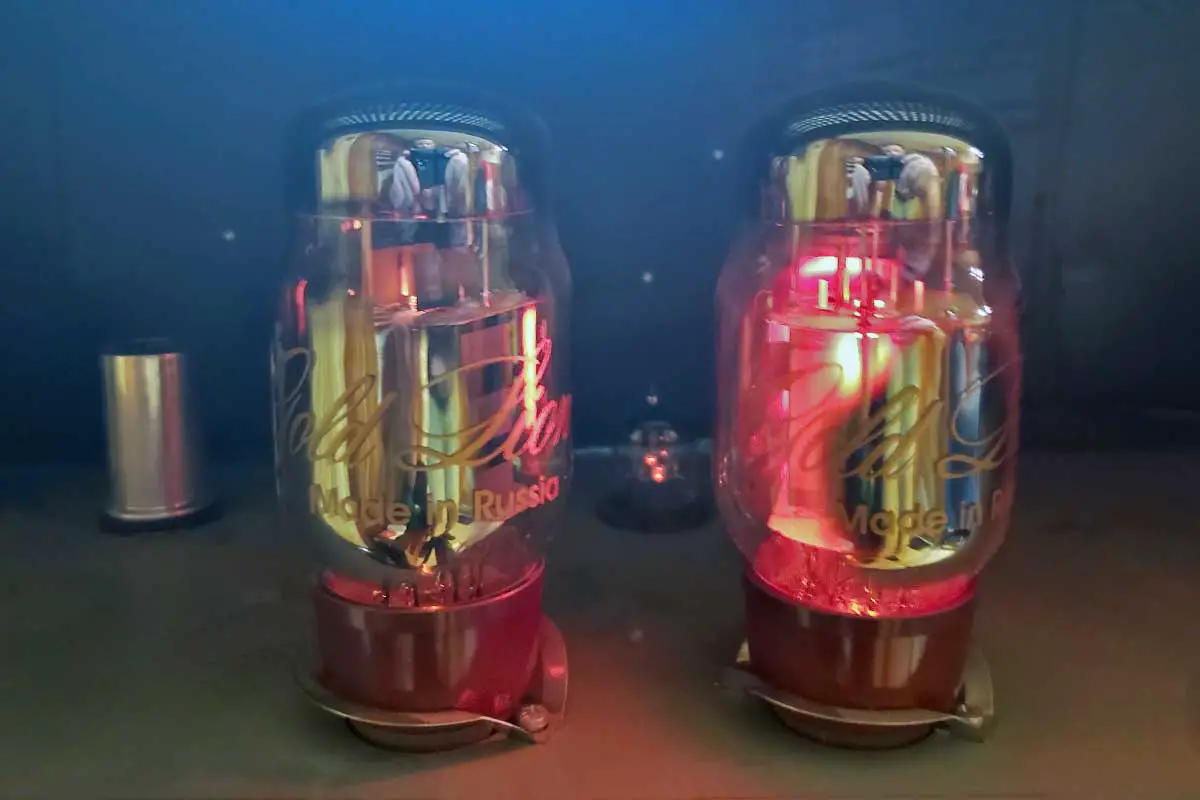In the realm of guitar amplifiers, the vacuum tubes you select can have a profound impact on your sound. Two types of tubes often compared for their influence on tone are the EL34 vs KT66. Each tube type offers a distinct sonic character and responds differently to the guitarist’s playing dynamics. The EL34-type tubes are known for their aggressive midrange and are a staple in many British amplifier designs, contributing to the classic rock sounds that have shaped genres for decades.
The KT66, on the other hand, is appreciated for its smoother and rounder tones, offering a different flavor that’s equally at home in a variety of musical settings. When comparing these tubes in a guitar amp tube comparison, it’s important to consider the style of music you play as well as the tonal qualities you prefer in your amplifier. The KT66 can deliver a more refined sound that some argue is better for blues or jazz, while the EL34 is renowned for its robust character, particularly suited for rock and metal.
Understanding the differences between EL34 and KT66 tubes will help you tailor your amp’s performance to your personal taste. Whether you’re chasing the chime and grunt of an EL34 or the nuanced clarity of a KT66, the choice of tubes impacts your guitar’s voice. Be mindful of the way these tubes articulate the nuances of your playing and how they complement your musical expression.

Understanding Tube Characteristics and Applications
When selecting tubes for your guitar amplifier, understanding the differences between beam tetrodes and kinkless tetrodes, as well as their impact on headroom and compression, alongside the power supply connection, is essential for achieving the desired sound characteristics.
Beam Tetrode vs. Kinkless Tetrode
A beam tetrode, like the EL34, is designed with a specific beam-forming plate which focuses electron flow, typically giving you a pronounced midrange and a rich set of harmonics. On the other hand, a kinkless tetrode, such as the KT66, operates without these beam plates, delivering a smoother output with more emphasis on the low-end response. Each type yields a distinct tonal flavor, with the EL34 leading toward an aggressive edge often preferred in rock genres and the KT66 favoring a fuller, bluesy tone.
Headroom and Compression
Headroom refers to the level of volume your amp can reach before the onset of distortion, which is particularly important if you’re chasing a clean tone. Amps equipped with EL34s may break up earlier providing a different type of compression, often desirable in rock settings where punch and power is paramount. In comparison, KT66 tubes tend to offer more clean headroom, allowing for greater volume before distortion, ideal for genres that demand clarity and fidelity.
The Power Supply Connection
Your power supply plays a crucial role in the overall sound and response of your amplifier. It must match the demands of your chosen tube type. The efficiency of KT66 tubes can mean a less stringent power supply requirement compared to EL34 tubes. This influences the amp’s behavior under load and can affect the headroom and compression characteristics. Maintaining a stable power supply ensures the optimal performance of your tubes and the integrity of your tone.
Historical Context and Brand Influences
When examining the distinctive sounds of the EL34 and KT66 tubes within guitar amplifiers, you should consider the historical development and impact certain brands have had on the music industry.

The Marshall Legacy
Marshall Amplifiers have become synonymous with the sound of classic rock due to their signature amplifiers like the JTM45 and the Plexi. Your knowledge of guitar tones is incomplete without understanding the role of Mullard EL34 tubes in shaping the aggressive, punchy sound that became Marshall’s hallmark. These tubes were integral to the iconic Bluesbreaker combo amp, which owes its name to the legendary blues sound it helped produce.
Fender’s Contributions
Moving across the Atlantic, Fender amps, notable for their clean and precise tones, have heavily influenced the blues and rock genres. The Fender Bassman is a testament to this, originally designed for bass guitars but found its place as a cornerstone in guitar amplification. While primarily associated with 6L6 tubes, the Bassman‘s circuitry and design have been influential for British manufacturers, including Marshall, shaping their approach to the EL34 and KT66 tubes.
Iconic Albums and Artists
Turning your attention to the music that made these tubes famous, think of iconic albums that feature the EL34’s gritty personality or the KT66’s smooth, rounded tones. The EL34 tubes have been a staple for high-gain tones in classic rock music, pushed to their limits by amps like the Hiwatt and Marshall Plexi. Blues artists have often preferred the KT66 for its rich harmonic content and dynamic response. The influence of these tubes is etched into the recordings of numerous blues and rock artists, comprising a significant part of the era’s musical texture.
Technical Differences and Sound Profiles
When comparing the EL34 and KT66 vacuum tubes in guitar amplifiers, you’ll find distinct technical differences that contribute to their unique sound profiles. These variances not only affect the resulting guitar tone but also interact with associated speaker types to bring out the characteristics of each setup.
EL34 vs. KT66 Sound Signature
- EL34: Known for its tight, mid-focused growl, the EL34 tube is a staple in British amplifiers, often used in iconic rock and blues settings. It excels in delivering a smooth overdrive with a pronounced midrange that cuts through a mix, especially when pushed to its limits for that classic rock distortion.
- KT66: The KT66, on the other hand, generally provides a richer, fuller sound with more rounded lows and sparkling highs. This tube is revered for its broader dynamic range and is well-suited for styles that demand clarity and warmth, making it a favorite for jazz and blues guitarists.
Impact on Guitar Tone
Your choice between an EL34 and KT66 power tube can markedly influence the tone of your guitar. EL34 tubes may push your guitar into a more aggressive sonic territory with a more assertive bite, favoring the creation of punchy riffs and solos. Conversely, KT66 tubes tend to allow for a wider spectrum of sounds, accommodating both clean and overdriven tones with less compression and more headroom. Tubes like the 6L6GC or 6550 could be considered when seeking alternatives, as they respectively offer their own distinct takes on clarity and headroom.
Associated Speaker Types and Characteristics
- Speakers: Your choice in tubes should complement the speakers in your amplifier.
- If you opt for an EL34, you may prefer a speaker that can articulate the midrange complexity and support the aggressive character of the tube, such as many Celestion models favoring a tighter low-end response.
- With KT66 tubes, look for speakers that preserve the harmonic richness and smooth out the high frequencies, such as those with a softer, more yielding cone material like paper, which can mellow the detailed highs.
The symbiosis between your guitar’s pickups, the vacuum tubes like the EL34 or KT66, and the amplifier’s speakers will define your ultimate sound, whether you aim for a clear, bell-like quality or a thick, saturated distortion. As you explore the tonal space between these two tubes, consider how each interacts with other elements like the KT77 or 6CA7, which also color your sound in their unique ways.
Making Informed Choices for Your Sound
When selecting between EL34 and KT66 valves for your guitar amp, your sound’s character and tonal qualities are significant factors. Each tube type offers a distinct audio signature, and understanding the nuances will empower you to craft your desired sonic output.
Evaluating Tube Amps for Personal Use
You want an amp that resonates with your musical style. Tube amps are renowned for their rich harmonics and warmth. EL34 tubes typically yield a classic British rock sound, characterized by a crisp midrange and assertive presence. In contrast, KT66s are known for a bolder, rounder tone with a smooth high end, favored in genres requiring a more powerful output. Combo amps with these tubes integrate the chassis and cab (speaker cabinet) into a single unit, offering convenience and often a signature sound associated with specific models. Remember, the choice between a single-ended amp and one with a different type of rectification or cathode bias can also affect the overall feel and response of your setup.
Navigating Brands and Manufacturing Variants
Different brands can offer subtle tonal variations even within the same tube design. For instance, Genalex produces reissues of classic tube designs, including the KT66, which are reputed for quality and consistency. Meanwhile, Tube Amp Doctor offers their own 6L6s that might be an alternative to look into if you’re considering deviations from EL34s or KT66s. If you’re interested in historical variants or looking for a unique tone, it might be worth exploring offerings from different brands or even vintage options, if your budget permits.
The Role of Blind Tests and Personal Preferences
Personal preference should be the ultimate guide in your selection. Conduct blind tests when possible to ascertain what truly appeals to your ear without brand bias. It’s easy to be swayed by the reputation of solid-state versus tube or EL34 versus KT66, but your ears are the best judge. Plug in, play, and listen. Whether it’s the responsive crunch of EL34 tubes or the full-bodied roar of KT66s, the tubes you choose should complement your playing style and the genres of music you most often perform.
Valve Amplifier Tube Comparisons
Want to learn more about guitar amp tubes? Explore the nuanced distinctions between preamp and power tubes, including popular matchups like ECC83 vs 12AX7 and EL34 vs KT88, as we unravel the sonic differences that shape your guitar’s unique voice.
| Tube Types | Application |
|---|---|
| ECC83 vs 12AX7 | Preamp Tubes |
| 12AU7 vs 12AX7 | Preamp Tubes |
| 6L6 vs EL34 | Power Tubes |
| 6L6 vs KT66 | Power Tubes |
| 6L6 vs 6V6 | Power Tubes |
| 5881 vs 6L6 | Power Tubes |
| EL34 vs EL84 | Power Tubes |
| EL34 vs KT88 | Power Tubes |
| EL34 vs KT77 | Power Tubes |
| EL34 vs KT66 | Power Tubes |
| 6V6 vs EL84 | Power Tubes |
